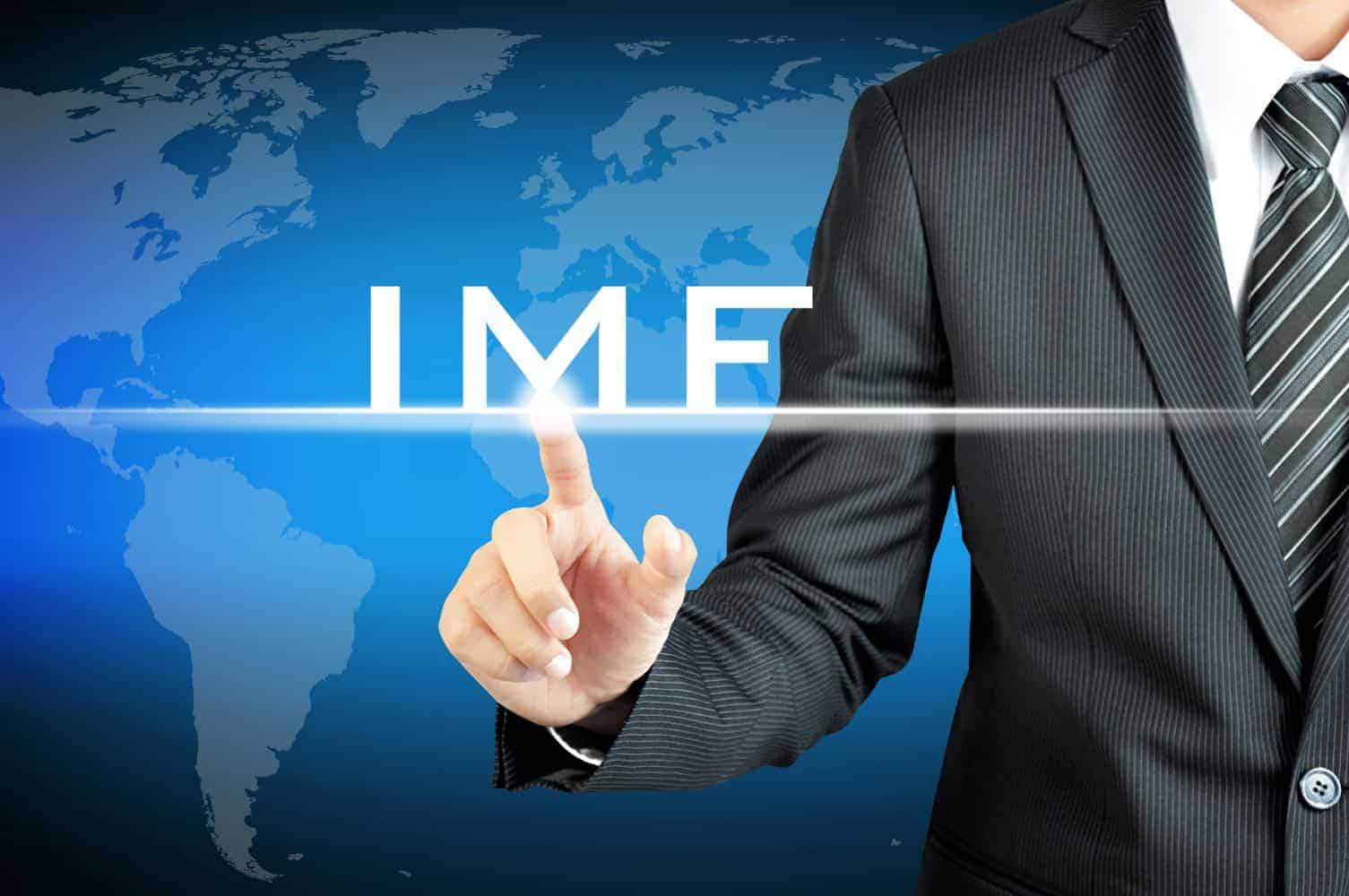Although consumers and governments want to see light at the end of the tunnel, the IMF says the outlook for the global economy remains dim.

The International Monetary Fund (IMF) expects the South African economy to grow by 1.1%. Although it does not expect US import tariffs to have such a big impact, the IMF warns that there are risks of policy insecurity and a possible bubble in the market for artificial intelligence (AI).
According to the World Economic Outlook Growth Projections of the IMF, the organisation increased its gross domestic product (GDP) outlook for South Africa with 0.1 percentage point to 1.1% but cut its growth projection for 2026 by 0.1 percentage points to 1.2%.
The IMF also does not have great long-term economic outlook for South Africa, expecting economic growth to only reach 1.8% by 2020, while inflation is expected to average 4% in 2025 and 3.6% in 2026.
Overall, the IMF’s latest report on global economic developments has a somewhat more optimistic undertone, although its outlook for Africa is mixed, as the continent’s economies continue to be marred by familiar challenges.
In addition, the IMF warns that global prospects remain dim as we head into 2026 and that strong performances in the first half of 2025 should not be mistaken for true economic resilience.
ALSO READ: US tariffs: expert says trade flows starting to realign to new markets
World economy doing better than feared, worse than needed
Brendon Verster, senior economist at Oxford Economics Africa, points out that in a preview to World Economic Outlook, managing director Kristalina Georgieva said that the world economy is doing “better than feared, but worse than needed”.
He says while the April outlook was dulled by President Donald Trump’s Liberation Day tariff salvo, the IMF now states that the negative impact on the global economy is on the modest end of the spectrum.
The Fund now forecasts global GDP growth to come in at 3.2% this year, up from previous predictions of 3.0% in July and 2.8% in April. Still, Verster says, the IMF noted that the “stability and trajectory of the global economy remains acute”.
In addition, the IMF stressed that the perceived robustness in global economic activity is largely attributed to temporary factors, such as trade and investment front-loading, coupled with inventory management strategies, rather than fundamental resilience.
ALSO READ: World Bank says this is how South Africa can create more jobs
IMF spots some green shoots in Africa
On the African continent, things are looking up for some countries, Verster says. Real GDP growth in sub-Saharan Africa is projected to remain unchanged, compared to 2024, at 4.1% this year, higher than the predictions made in July (4.0%) and April (3.8%).
Economic growth in the Middle East and North Africa region is forecast to accelerate to 3.3% in 2025, up from 3.2% in July and 2.6% in April. The IMF lifted South Sudan’s real GDP growth projection for the year by a staggering 28.6 percentage points to 24.3% compared to a contraction of 4.3% predicted in April.
“The war-torn nation resumed oil exports in January after a year-long hiatus, but we think rampant corruption, rising debt and downbeat global commodity prices will still fuel downside risks. Nigeria ranked as the front-runner among Africa’s heavyweight economies, with real GDP growth raised to 3.9% in 2025, up 0.5 percentage points compared to the July outlook and 0.9 percentage points from April.”
The IMF said its upward revision was informed by the West African nation’s rebased GDP, combined with solid oil production, improved investor confidence, supportive fiscal measures and a limited exposure to US tariffs. Other notable upgrades include Ethiopia (+0.6 ppt to 7.2%), the DRC (+0.6 ppt to 5.3%), Morocco (+0.5 ppt to 4.4%) and Egypt (+0.5 ppt to 4.3%).
ALSO READ: Time for Eskom and Transnet to get their act together to grow economy
IMF lowers GDP forecasts of 20 African nations
A total of 20 African nations’ real GDP growth forecasts for 2025 were lowered compared to the April outlook. Economic growth in Senegal was slashed by 2.4 percentage points to 6.0% this year, while Libya (down 1.7 ppts), Malawi (down 1.1 ppts) and Somalia (down 1.0 ppt) also received notable downgrades.
The IMF projects Botswana’s economy to contract by 0.9% this year, compared to an annual decline of 0.4% expected in April. Accordingly, Verster says, the diamond-dependent country now ranks as one of only two economies on the continent where a contraction in real GDP is expected in 2025. The other country is Equatorial Guinea (-1.6%).
It also stressed that the outlook for the global economy remains dim. Verster says it forecasts global economic growth to moderate to 3.1% in 2026, but regional growth is projected to accelerate to 4.4% in sub-Saharan Africa and 3.7% in the Middle East and North Africa.
However, the IMF warned that upswings in commodity prices, largely driven by climate shocks or geopolitical tensions, pose downside risks, specifically in low-income nations that rely on imports. On the flipside, progress in trade negotiations could lower tariffs and mitigate uncertainty, Verster says.
ALSO READ: ANC’s 10-point economic plan: Does it prove state can serve without self-interest?
IMF has more optimistic but cautious tone
He notes that the IMF has struck a more optimistic, yet cautious tone. “Still, beneath the surface, concerns around Africa’s economic resilience persist. Many African nations remain trapped between high debt burdens, narrow fiscal spaces and rising social pressures.
“Commodity exporters may experience some relief, although this will be tempered by weak demand in advanced economies and global trade frictions. The IMF’s call for stronger domestic resource mobilisation, improved management of public investments and governance reforms is familiar but becoming increasingly urgent. Without meaningful progress on these fronts, global tailwinds will do little to accelerate inclusive growth.”
Verster points out that Africa’s short-term outlook therefore hinges less on global dynamics than on its ability to roll out credible fiscal and structural reforms to shore up productivity and lure sustainable investment.
“In essence, the danger is not an imminent crisis, but rather a stagnation, a slow drift where economies survive but fail to transform. While the continent is attempting to forge closer intra-African trade ties via homegrown solutions such as the African Continental Free Trade Area, its implementation faces numerous headwinds.
“Still, there is a chance that African nations can benefit from a global trade reorientation, while the continent is also pushing to pivot from resource extraction to value-adding in a bid to drive local industrialisation.”






